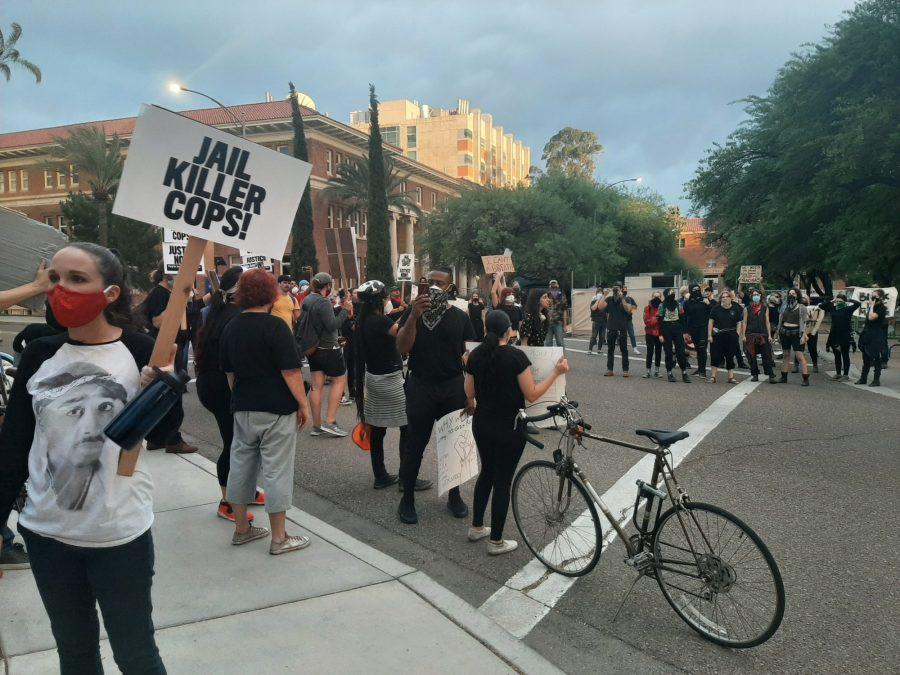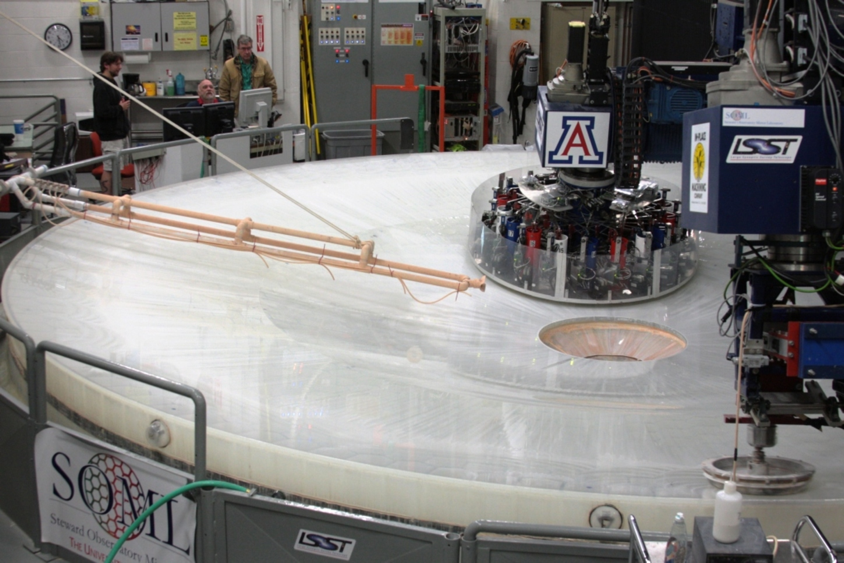Cheerful picnics and celebratory graduation photoshoots populated Old Main Saturday night with one outlier: a small group of protesters standing by the Berger Memorial Fountain on the University of Arizona campus.
But these protesters were fed up.
“People are fed up. It’s just a fine line because there comes a point where you need action instead of just words,” said Autumn Hand, one of the protesters out Saturday night.
George Floyd was a black man who was killed by police in Minneapolis on Monday, May 25. He was pinned to the ground by his neck for about eight minutes and was still held down after telling officers he “can’t breathe.”
In response to violent protests in Tucson, Gov. Doug Ducey issued a statewide declaration of emergency at around 1 p.m. Sunday, May 31, putting in place a one-week 8 p.m. curfew.
“This gives law enforcement an additional tool to prevent the lawlessness we’ve seen here and in cities nationwide,” Ducey said. “Police will be equipped to make arrests of individuals who are planning to riot, loot or cause damage and unrest.”
Additionally, this deceleration “authorizes expanded National Guard mobilization to protect life and property throughout the state,” Ducey said in the Twitter thread.
Saturday marked the second night of George Floyd protests in Tucson. Those protesting gathered in front of Old Main at 6 p.m. Saturday evening to begin their march downtown.
What began as a group of less than 10 people grew into an army of over 500, with almost every person wearing a mask as a precaution for COVID-19.
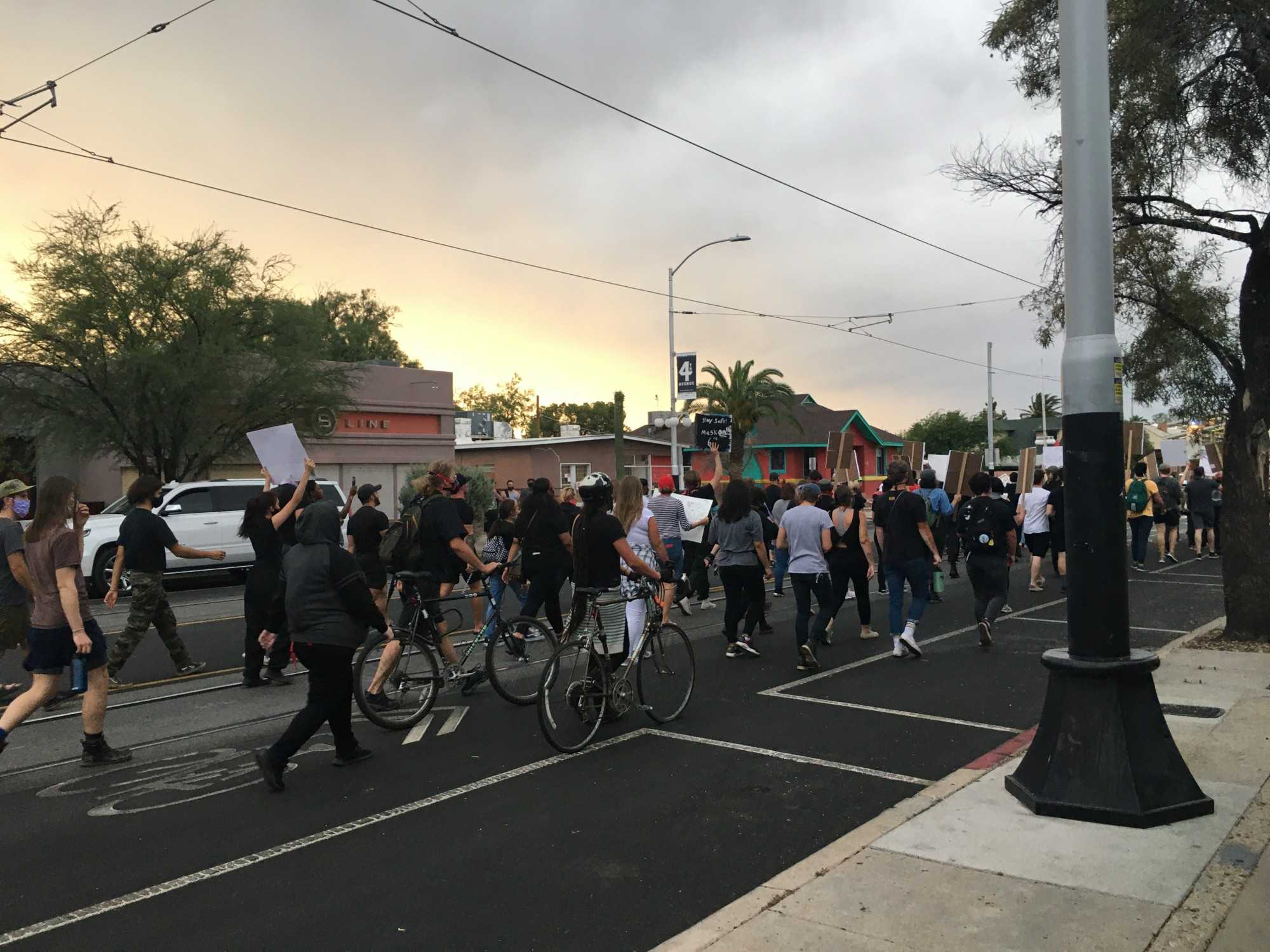
Saturday’s protest was postponed by Black Lives Matter Tucson, although it continued regardless.
“We heard it was canceled and we wanted to come out and support anyway, and we’re just here to raise awareness for it,” Hand said. “It’s a righteous act. This is for the equality of men because this is ridiculous. The things that you saw in that video of [Floyd] — cops don’t get taught that stuff. That is inhumane for you to put your knee on an innocent man’s neck for over eight minutes while he suffocates.”
Another protester, Ayla Ahmad, who is a UA student, added, “He was calling out to his mom. His mom died three years ago. [He was] moments away from death, and it’s all getting recorded.”
They began marching, chanting phrases like “What do we want? Justice!” and “I can’t breathe!”
In anticipation of protests, some businesses had begun boarding up their windows, including Posner’s Art Store on University Boulevard. Employee Dylan Burton did not know if businesses on Main Gate were going to be looted, but Posner’s could not take that chance.
“We don’t know, that’s why we’re doing it,” Burton said. “We’d rather have this than a broken window tomorrow morning. It is what it is unfortunately. It sucks, but we’re worried about our livelihood here.”
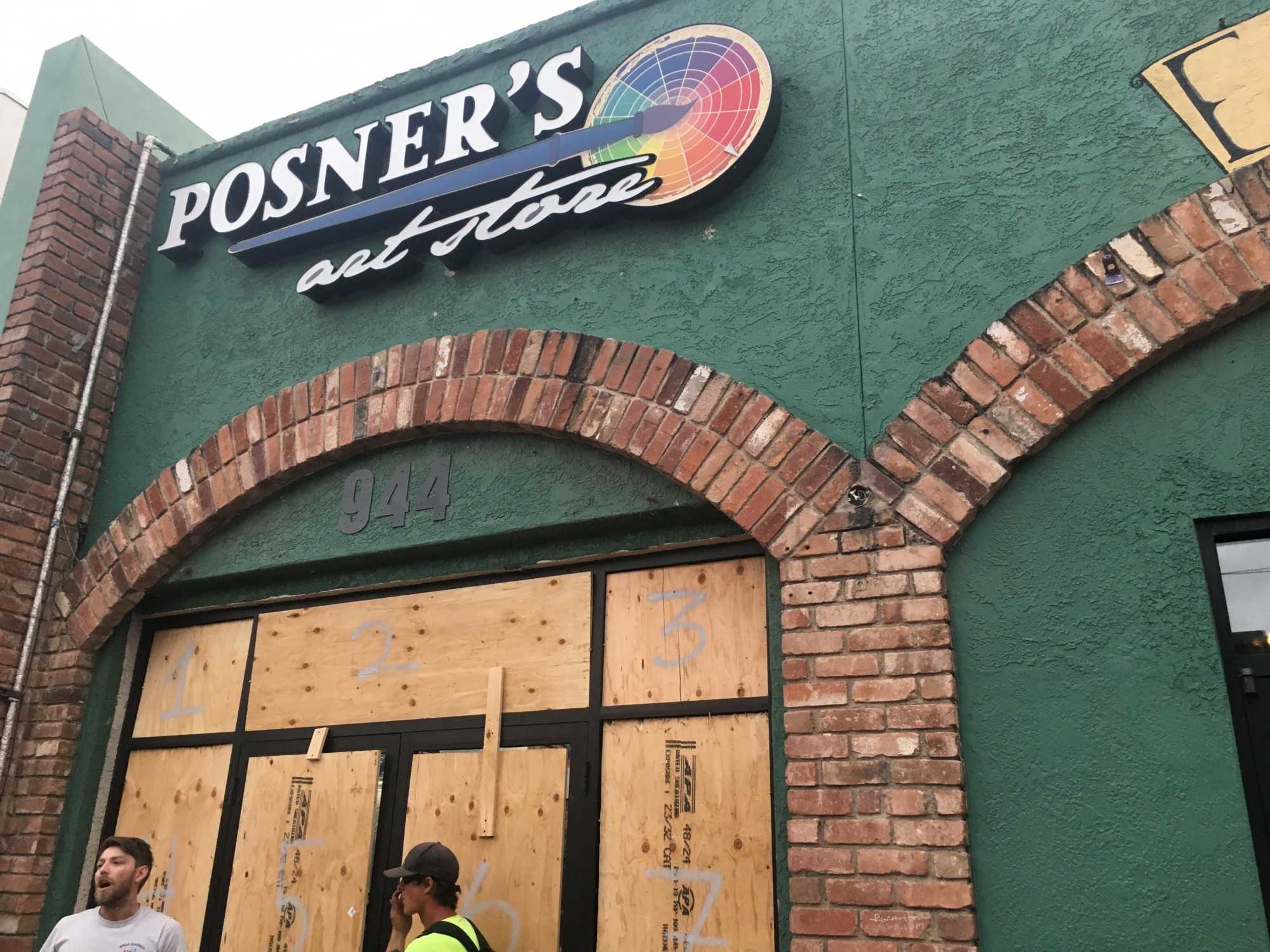
In the residential area of University Boulevard, people watched from their porches as the protesters marched by, some shouting support. There, those protesting moved from the sidewalk into the bike lane.
Many cars that drove past honked in support, sometimes with the rhythm of the chants. Passengers in vehicles occasionally raised clenched fists in solidarity.
When they turned onto Fourth Avenue, protesters occupied the middle of the street. Cars whizzed by on either side, where horns blaring in support intermixed with the honks of exasperation.
Protesters marched past onlookers sitting inside restaurants and employees standing in front of their businesses, and empty storefronts with signs describing businesses as locally owned, family owned, woman owned and more.
A few agitated pedestrians mumbled complaints such as, “They’re lucky they live in America,” “This is Tucson,” and “Told ya it’s gonna be on worldwide news.”
Several establishments on Congress Street covered their windows with wooden boards, many of which had spray-painted messages such as the “Be Kind” logo.
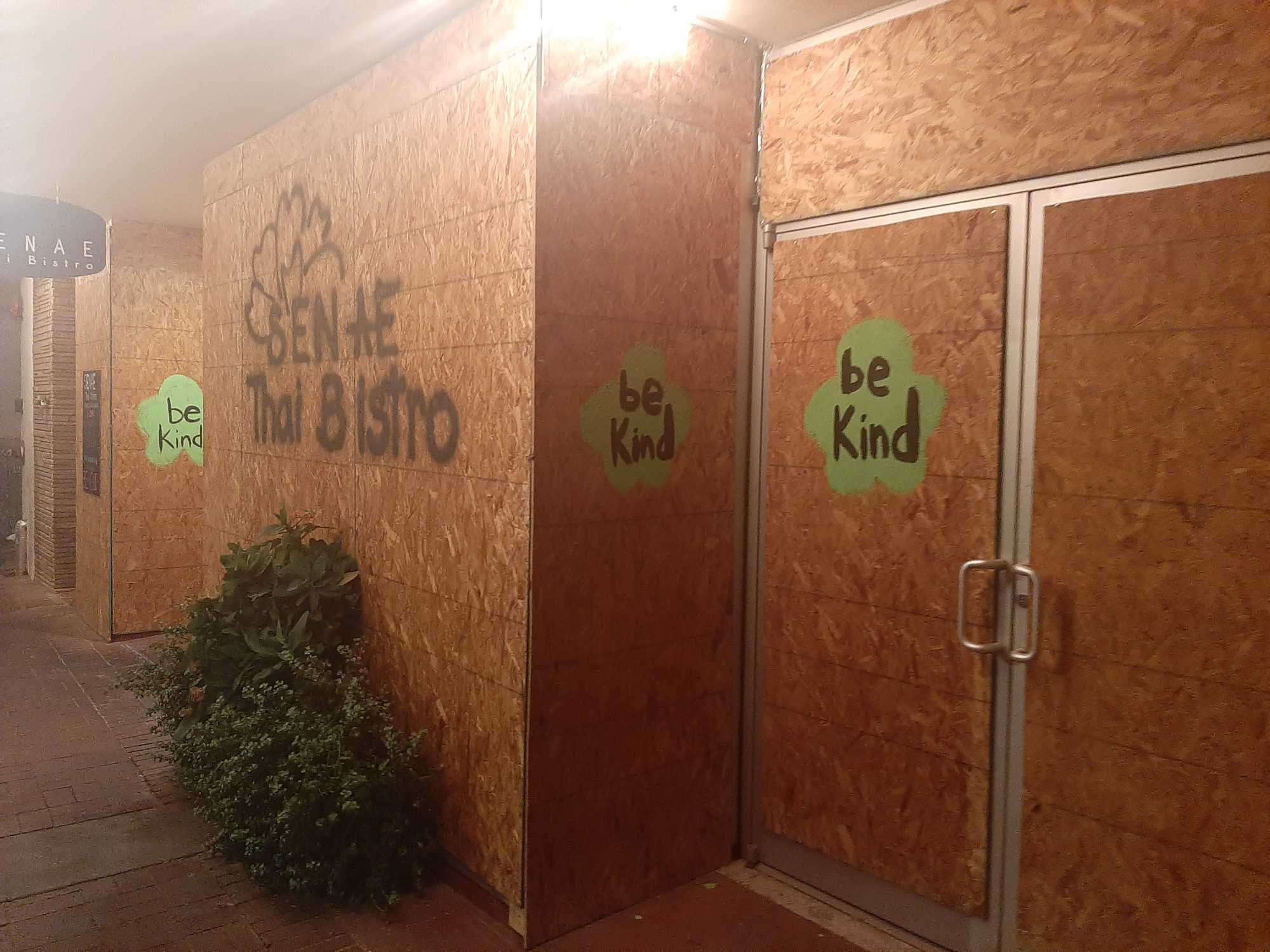
The protesters marched between the university and downtown twice over, with police growing increasingly active as numbers gradually grew and the night wore on. As they left Main Gate Square for the second time, police cruisers began trailing the rear of the march as a police helicopter continued circling overhead.
Finally, protesters marched toward the Tucson Police Station on Stone Avenue.
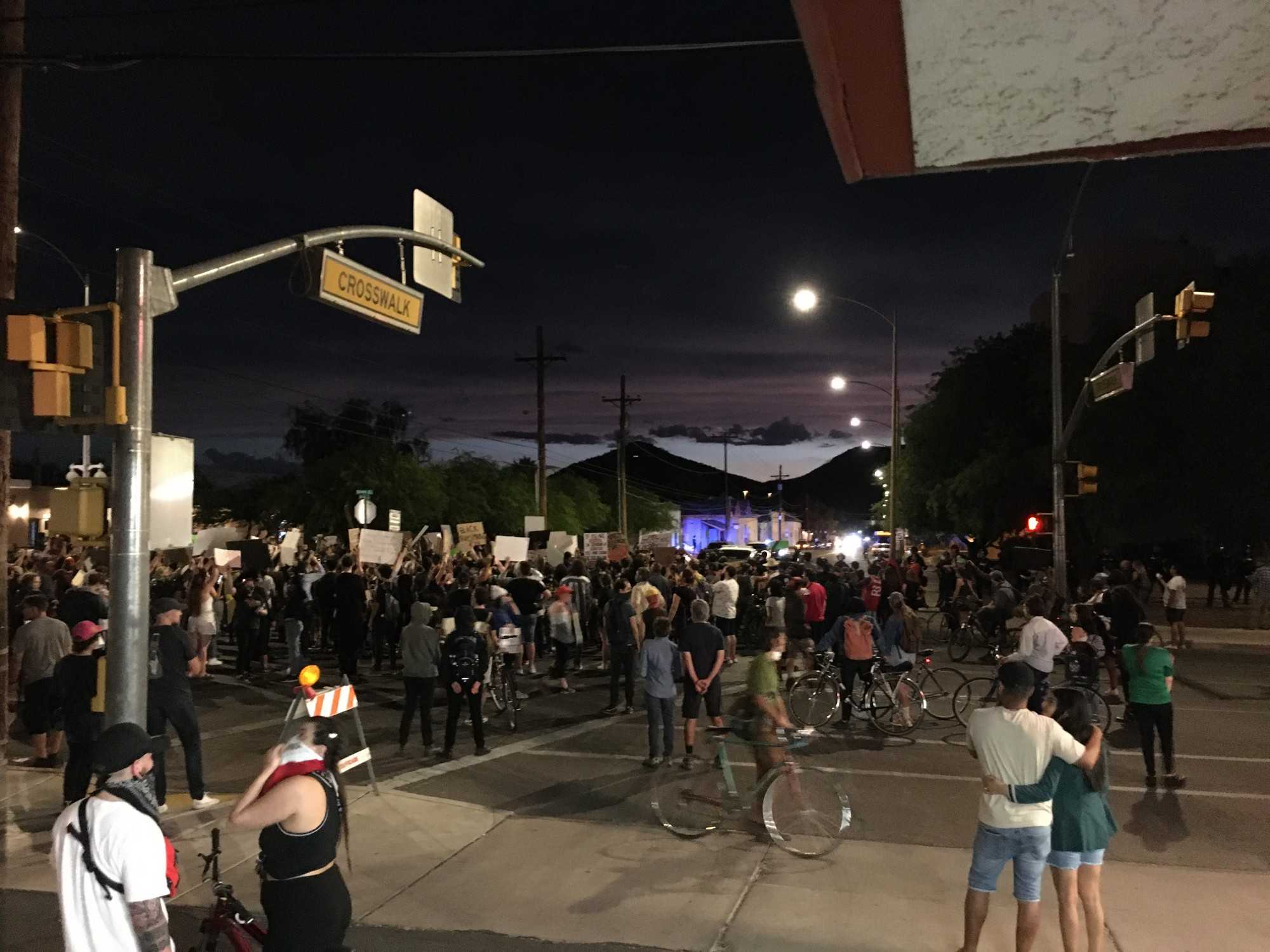
As they neared the station, protester Jarron Webster, who is black, said he was not satisfied with police treatment of black people.
“It seems like … every death caused by police, they’ve tried to justify it with bringing up people’s past,” Webster said. “It just sucks.”
Webster also said he thought that while protesting has gone on for years, there’s still a lack of equal rights.
“In Tucson there hasn’t been very many issues with racism that I’ve experienced,” Webster said. “I’m not from Tucson. I’m from L.A. I’ve been profiled, I’ve been harassed, I’ve nearly gotten beaten. It’s about waking up the entire world and just making everybody aware of what’s going on, there are still people ignorant to what’s going on. It’s really good to be seen and heard by as many people as possible.”
At around 8 p.m., protesters briefly gathered in front of the Tucson Police Station on the corner of 14th Street and Stone Avenue. Soon after, police officers in riot gear emerged from the station and lined up on the sidewalk in front of the station.
Those protesting momentarily seemed to disperse and many went their separate ways.
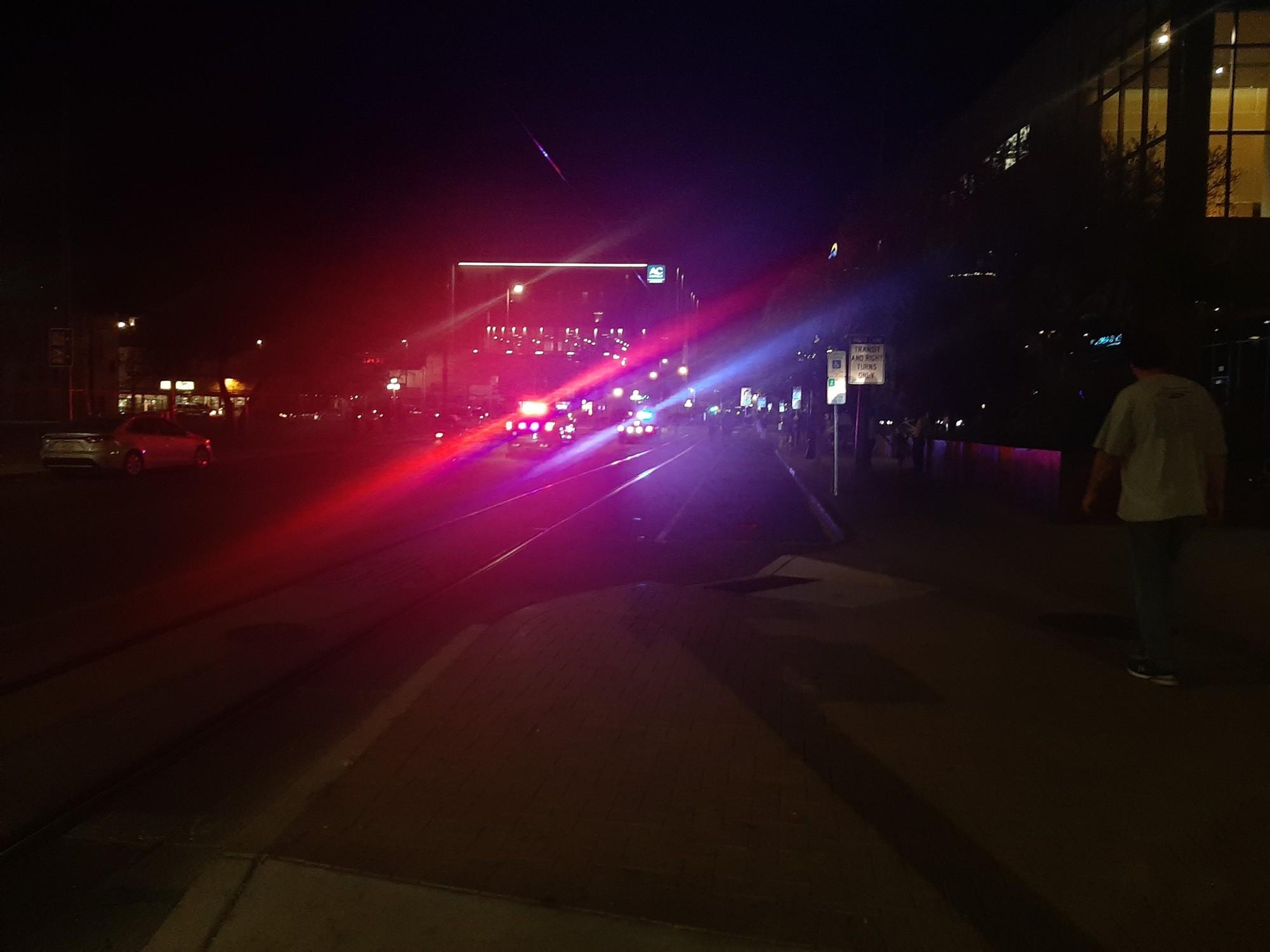
Marcus Young, better known as “Brother Marcus,” led the march until the gathering at the police station. He said he was from Minneapolis and insisted that protesters should refrain from using violence like those in Minneapolis.
“I didn’t come here to do [violent protesting]. I came here to stand with y’all,” Young said. “I came down here to say, ‘Hey I’m from Minneapolis, don’t let your city get tore up like mine did.’ People that tore up Minneapolis weren’t even from there. My people didn’t do that to their city.”
The remaining group gathered once again on the north side of Old Main at about 9:30 p.m. There, many sat and listened to the opinions and personal perspectives of participants.
Things started to become heated between members of the group. One speaker said, “This is the problem. We can’t get along.”
Just as tensions began to cool down, one speaker ended her testimonial with the words, “All lives matter.” She was met with boos from the crowd as one man shouted sarcastically, “But black lives don’t mean shit!” This prompted a chant of the words, “Black lives matter.”
Police were present in streets surrounding the protesters. On James E. Rogers Way, police officers in green uniforms with TPD patches on their arms stood near several unmarked police vehicles. On Park Avenue near the intersection with University Boulevard, a few police cars were parked in the road with several officers standing beside them. Above, another police helicopter had joined the mix, with two now circling.
After Daily Wildcat reporters left the scene, the situation escalated quickly.
According to a Twitter thread from Arizona Daily Star reporter Edward Celaya, who was on site, a group of protesters then made their way down Seventh Street to the train tracks. There, they were confronted by police.
In a video taken by Celaya, protesters are seen moving back from officers in green uniforms similar to those Wildcat reporters spotted, and in the background, police in riot gear have blocked off the street ahead.
Celaya also tweeted that the police fired rubber bullets — later identified as paintballs — into the group of protesters with “seemingly no provocation,” and posted a video where he said he was hit in the knee by one such paintball.
A few minutes later, in another video posted by Celaya, police were seen pushing protesters back down the street. One woman stood in front of police with her back turned to them, holding her hands up and screaming several times over, “My hands are right here!” Her arms are then forced down to her sides as she is pulled back behind the line of police.
The Star also reported tear gas fired into a line of protesters and dumpsters being set on fire.
Around 8 a.m. Sunday morning, following Saturday night’s protest, UA President Dr. Robert C. Robbins sent out an email addressing the UA community in response to Floyd’s death.
“We should all be in solidarity to advocate for the end of civil rights, educational and healthcare injustices to our fellow sisters and brothers of color,” Robbins said in the email. “Compassion, integrity and inclusion can help us move forward, and demand better. As a community, we must challenge ourselves to do more to be welcoming, inclusive, supportive and kind — and to stand side by side with the most vulnerable among us.”
Even with Ducey’s curfew, protests may continue into the coming nights.
For information on how to stay safe during a protest, check out Amnesty International’s protest safety guide. The American Civil Liberties Union also has a list of rights for protesters in certain situations.
Follow Sam Burdette and Ella McCarville on Twitter



